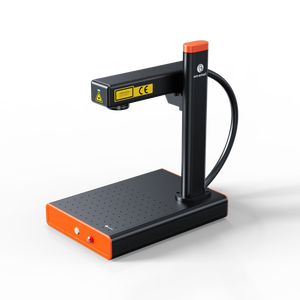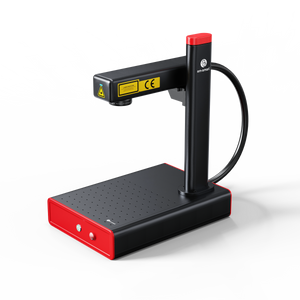When it comes to laser engraving, precision is not just a requirement; it's an art. One of the more intricate chapters of this art is the use of a rotary device with a Galvo laser. A rotary attachment allows you to engrave cylindrical objects with the same ease and finesse as you would a flat piece. LightBurn software offers a robust set of tools to make this process smooth and efficient. This tutorial will walk you through the steps of setting up your rotary for Galvo in LightBurn, ensuring you can engrave those tumblers, glasses, and bottles with confidence.
Ensuring Compatibility with Your Galvo Laser
Before you get started with the rotary setup in LightBurn, it is crucial to verify that your Galvo laser machine is compatible with a rotary device. There are two major components to consider for compatibility—first, the physical aspect, which involves having an external rotary axis, either a chuck or roller type. Second, and equally important, is the internal support from your laser machine's control board for a rotary function.
Not all Galvo laser systems come with a rotary function out of the box. It's essential to check your laser's specifications or consult with the manufacturer to confirm that your machine's control board can interface with and control a rotary axis.
Understanding the Rotary for Galvo in LightBurn
Rotary devices are essential for engraving cylindrical or rounded objects. They rotate the piece so that the laser can engrave across the surface evenly. LightBurn software has incorporated features to make this process intuitive and straightforward for Galvo laser users.
Rotary Setup Access
First things first, accessing the Rotary Setup in LightBurn is a breeze. You can find it on the toolbar with the rotary icon, in the "Laser Tools" menu near the bottom, or by using the shortcut Ctrl+Shift+R (Cmd+Shift+R for Mac users).
Choosing Your Rotary Type
There are generally two types of rotary attachments: chuck and roller. The chuck style grips the object, much like a lathe, while the roller style sits the object on top of wheels. Your choice will dictate the setup process in LightBurn.

Rotary Setup for Galvo (with chuck)

Rotary Setup for Galvo (with rollers)
Configuring the Rotary

Steps per Rotation
Identify the 'Steps per Rotation' value, which is how many motor steps are required for the rotary to complete a full 360-degree turn. This can usually be found in the documentation provided by your machine's manufacturer or determined by using the 'Test' button in LightBurn. For Instance, Steps per Rotation for EM-Smart laser is 25,000.
Speeds and Acceleration
Set the minimum and maximum speeds for the rotary's movement, measured in pulses per second, and define the acceleration time - which is how quickly it ramps up from the minimum to maximum speed. Additionally, you need to set the 'Return speed', which is the rate at which the rotary returns to its starting point after a rotation.
Axis Orientation
Choose whether the rotation is around the X or Y axis, depending on your rotary's orientation. If rotation is backwards or sliced incorrectly, toggling the 'Reverse Rotary Direction' switch may be necessary.
Split Setup
A unique feature for Galvo markers in LightBurn is the 'Split Setup', which divides the job into smaller parts (slices), rotates the object, and then proceeds to the next slice.
Split Size
The size of each slice is called the 'Split Size'. If your object is tapered, irregularly shaped, or not perfectly aligned with the rotary axis, using a small split size can help reduce gaps or misalignment of the splits.
A larger split size will reduce the time spent running the job, but can be harder to dial in the settings such that no overlaps or gaps are visible.
Overlap
To help eliminate visible gaps between slices, you can tell LightBurn to overlap them - specifying an overlap of zero means that each slice is run on its own. A non-zero overlap value will produce that much overlap on the ends of each slice, like this:
If you are removing paint, anodizing, or other surface coating, using a small overlap is recommended. If you are annealing or marking the material directly, adding overlaps could produce visible artifacts.
Run Whole Shapes
When 'Run whole shapes, if possible' is turned on, LightBurn will attempt to create splits that keep shapes intact. This can produce a higher quality finish without gaps or misalignment within shapes.
Running the Job
When rotary mode is enabled, pressing the Start button on the main window will bring up the Rotary Marking window, shown here:
From here you can tune the split size, overlap, and object diameter, as well as jog the rotary, and run the job. When running a rotary job, the center of your page is treated as the current rotary position when you clicked 'Start'. The 'Sanity Check' button will check for some easily overlooked mistakes, and is a good supplement to previewing and framing your design as a final check before running the laser.
Setting up a rotary attachment in LightBurn for your Galvo laser requires ensuring compatibility, understanding the configuration, and meticulously setting parameters. With careful preparation and practice, you'll be able to expand your engraving projects seamlessly to include a variety of cylindrical objects. Precision starts with preparation, and with these steps, your engravings will not just be precise, but also masterfully crafted.
Reference:
https://docs.lightburnsoftware.com/galvo/Rotary.html



